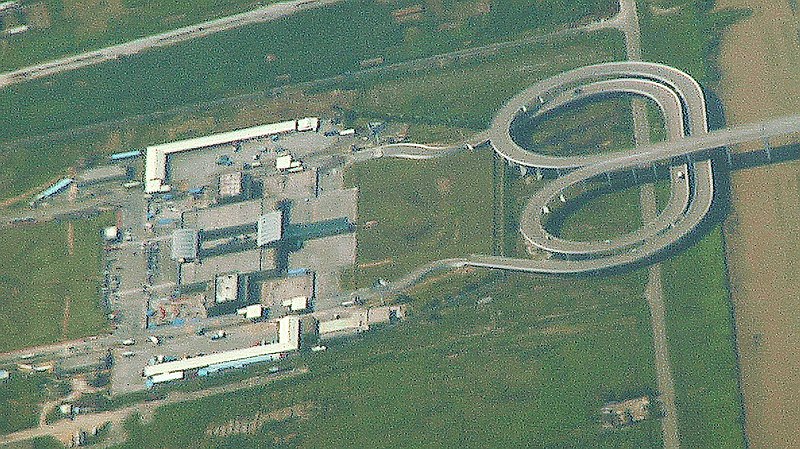The Bridge That’ll Flip You
Along with Hong Kong, Macau is one of two special administrative regions of China. Like Hong Kong, Macau is a former European colony; as early as 1557 (and certainly from 1887, after the signing of the Treaty of Peking), Macau was part of Portugal. In the 1980s, though, Portugal agreed to transfer Macau to Chinese control, and on December 20, 1999, Macau officially became part of China. As part of the agreement, China is supposed to let Macau be an autonomous city-state, to some significant degree. For our purposes today, that’s basically been the case.
(Or, in other words, the issue of Macau/China relations is thorny, but really doesn’t need to be addressed to tell the story below. Cool? Great. Onward!)
A century ago, though, Macau was still part of Portugal. And at the time, if you were in Portugal, cars drove on the left side of the road. Macau was no exception. But around that time, most European nations began shifting to right-side driving. Portugal made the change in 1928, but it allowed its colonies that bordered left-handed traffic jurisdictions to stay as-is. At the time, Chinese drivers drove on the left-hand side, so Macau didn’t make the switch. When China ultimately changed over to right-hand driving in 1946, Portugal saw no reason to have Macau follow suit. As a result, the city remained a left-handed jurisdiction, and the infrastructure grew around it. By the time Macau became part of China half a century later, it seemed too late to make the switch.
Unfortunately, travel between China and its new territory became difficult as a result. So in March of 2000, just months after Macau joined China, the Lotus Bridge, seen in the aerial picture below, opened.

On the east side of the bridge is Cotai, one of the regions of Macau. On the west is Hengqin, an island in the Chinese city of Zhuhai. The bridge itself connects mainland China with Macau, but a straight bridge wouldn’t do the job. So they added the “lotus” feature on the Macau side. Traffic entering from China begins on the right side of the road but, after going through some loops (literally), it ends up on the left. Traffic originating in Macau goes through the reverse, and all this happens seamlessly.
And best of all, it operates around the clock without creating traffic. As Ken Jennings said in Conde Nast Traveler, “there are a few nations that do have to worry about how to switch traffic at the border. Left-driving Thailand is one; three of its neighbors, Cambodia, Laos, and Myanmar, drive on the right. Most of its high-traffic borders just use a traffic light to alternate the flow of vehicles—a simple solution, when you think about it.” But traffic lights require waiting, and with lots of cars flowing into and out of Macau (especially late at night; Macau is the only place in China where casinos are legal), a better solution was warranted.
While the Hong Kong/China border causes similar problems — drivers in Hong Kong, like in Macau, drive on the left, the major bridge connecting Hong Kong to China doesn’t have the same feature. Despite being newer and, as of this writing, the world’s longest sea-crossing, the Hong Kong–Zhuhai–Macau Bridge doesn’t bother with the right-hand/left-hand switch. Instead, all traffic — even those on the Hong Kong side of the border — drive on the right, and motorists off-bridge have to use stoplight-controlled intersections to make sure they shift to the correct side of the road. (That’s too bad, too; a 2010 concept for the bridge had a helix-shaped solution that would have looked awesome.)
Bonus fact: Most of the world has settled on right-hand driving traffic rules, and there are certainly some holdouts that, like Macau, have stuck with a left-hand driving rubric. But one country — East Timor — can’t seem to make up its mind. Since 1999, East Timor has been an independent nation, despite sharing its island with Indonesia’s West Timor region. East Timor was part of Portugal from 1769 to 1975, and while originally a lefty-driving area, switched with most of Portugal in 1928. But when Portugal gave up control of the area, Indonesia quickly occupied it, switching the roads to right-hand driving. When East Timor freed itself of its occupiers in 1999, it switched back to left-handed driving. It’s the only area, so far, to switch back.
From the Archives: Högertrafikomläggningen: Sweden’s rip-off-the-bandaid approach to changing driving directions.
